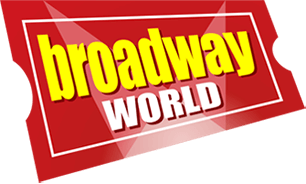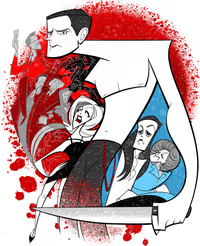RE: Production Values During C-19
#1RE: Production Values During C-19
Posted: 4/27/20 at 11:58am
IMO, almost every broadcast (TV, or streaming) is looking exactly the same in regards to production values. Lots of static, talking heads from a chair in their home, using a ring light. My question(s) is/are:
Who, or which shows do you think are stretching their creative muscles in terms of production values to go outside the box? Also, for all the techies, set dressers/properties masters and directors here, what creative ideas would YOU share, or like to see done to make the best of this bad situation, yet still comply w/social distancing and stay-in-place requirements.
So far, I'm most impressed with SNL At Home (this second airing last Saturday had some creative and effective uses of green screen, especially the Bartenson's Grocery Store sketch), and American Idol (although the use of strip lights was a bit overdone). In spite of my personal distaste for strip lights, I am impressed by the multi-camera shots achieved by using multiple iPhones.
What do YOU think, or what tech/techniques would you implement to creatively boost production values during C-19?
#2RE: Production Values During C-19
Posted: 4/27/20 at 12:30pm
Drag Queens are doing the most innovative work with their streams. Drag artists like JukuForNow, Florida Man, Laurel Charleston, and West Dakota are really pushing the boundaries for this stifled performance form with filters and fun, simple camera tricks. I recommend performers and theatremakers looking to the drag shows of Instagram live and twitch to learn some tricks.
MollyJeanneMusic
Broadway Star Joined: 3/10/19
#3RE: Production Values During C-19
Posted: 4/27/20 at 12:35pm
The Broadway Jackbox lifestreams are pretty well done - besides a few technical issues, everyone seems to have a pretty good control over their lighting and set design. The Streamyard program is well-used, too - they use that for Stars in the House too, right?
#4RE: Production Values During C-19
Posted: 4/27/20 at 3:10pm
We've witnessed a surprising number of truly spectacular performances over these weeks. They don't need distractions the way drag queens do. KISS is in effect. The glitch last night was caused by the only thing in the show that violated the rule.
Also, these have all been benefits; leave the production values to the commercial operators.
#5RE: Production Values During C-19
Posted: 4/27/20 at 8:12pm
Really, just what type of 'production values' are you expecting? Just like teachers, they are winging this and doing the best they can to put something watchable out there. I think for the most part, they are doing a great job and I am grateful.
Sheesh.
chrishuyen
Broadway Legend Joined: 11/12/14
#6RE: Production Values During C-19
Posted: 4/28/20 at 1:53pm
I'd argue that for Broadway performers, it's actually nice to see them just as talking heads performing on their couch or their bed or whatever, since we so often see them glammed up or in costume. That said, I think a lot of the submissions for the Sondheim 90th celebration were done really well. Alexander Gemignani's Buddy's Blues stands out for both creative use of space and just overall performance despite having a lower quality camera/mic than some of the other performers. Also the videography on Sutton Foster in what looked like a paper towel fort. Though to be fair, these videos weren't live.
I feel like every time on Stars in the House, Seth is basically in a new location (how many pianos does he have?!) which is also pretty funny to see since he keeps trying to fix the lighting. Gavin Lee doing his Squidward tap routine was also a cool thing to see just for the variety.
As far as shows that aren't just conversations/sing a song, I think the model done by the Someone in a Tree performance could be interesting to see more of, since it still looked like they were almost interacting with each other despite being on separate zoom calls. So that might be something we see more of in things like readings or more collaborative work.
#7RE: Production Values During C-19
Posted: 4/29/20 at 9:33am
dramamama611 said: "Really, just what type of 'production values' are you expecting? "
It's not about expectations. My purpose for this thread was to look for, and applaud un-expected examples of ingenuity and creativity.
Besides the two examples I mentioned, I also think Buyer and Cellar was not only performed brilliantly, but the idea to create an adaptation from stage to stream was was equally brilliant; a choice that (as was mentioned in the B&C thread) enhanced the show in unexpected ways, especially in terms of 'intimacy'.
I think it's very possible that, were there no pandemic, we all would have missed out on that example of brilliance. What a shame that would have been.
I'm certain that as social distancing and stay-in-place orders continue, there will be more examples of creative adaptation and ingenuity. I had/have no "expectations" other than to start a thread where they might be recognized.
Sheesh.
#8RE: Production Values During C-19
Posted: 4/29/20 at 9:52am
HogansHero said: " They don't need distractions the way drag queens do. ."
Oof, you reek with entitlement with this.
#9RE: Production Values During C-19
Posted: 4/29/20 at 12:05pm
TheSassySam said: "HogansHero said: "They don't need distractions the way drag queens do. ."
Oof, you reek with entitlement with this."
I may reek (even though I just showered) and perhaps I have felt entitled in my life (as I suspect everyone who posts here has, whether they admit it or not). But I think what you wrote is way off base.
Regarding the "entitlement" quip, I fear you misapprehend what I was saying. Drag queens are all about façade, illusion, and trappings. Artifice is the essence of the art form.
Care to reconsider YOUR sense of entitlement?
#10RE: Production Values During C-19
Posted: 4/29/20 at 4:42pm
I'm with Hogan on this: SASSYSAM, that is no way even close to what entitlement is.
#11RE: Production Values During C-19
Posted: 4/29/20 at 4:57pm
For what's it's worth: So long as you get some serviceable lighting and the camera angle right (Sorry, Christine Baranski!), iPhones provide good enough video/photos that the picture quality is never the issue. Webcams for streaming are definitely more iffy. Otherwise, my main issue is almost always SOUND! Without a quality microphone, some of these things sound amateur. Even Buyer & Cellar (which was brilliant) -- it sounded like it was being recorded through a telephone.
Updated On: 4/29/20 at 04:57 PM#12RE: Production Values During C-19
Posted: 4/30/20 at 8:59am
raddersons said: "Even Buyer & Cellar(which was brilliant) -- it sounded like it was being recorded through a telephone."
I have a personal bias toward Buyer and Cellar, in that I can't praise it enough... Although I agree with you that the sound was typical of a home-made webcast, that's exactly why it was perfect. As a struggling actor whose most recent job was @ Disneyland (I dunno... does Disneyland pay well?), would Alex More have owned a professional sound mic?
I didn't feel like I lost any of the script and for me, every little glitch (including tiny details like having to hit the bell multiple times to get it to ring) enhanced the setting and the character of Alex.
Although the Tonys have been postponed, and it is probably (technically) too late for consideration, I would LOVE to see the live-streamed Buyer and Cellar awarded a special Tony.
It was a groundbreaking production in that's it's the very first (at least that I'm aware of) stage to stream adaptation. I didn't get to see the Off-Broadway show, so I can't reliably cite specific comparisons, but I can't help but feel that by intentionally adapting the show to fit the setting of a webcast (and producing it as a live-stream), both the show and the character of Alex became significantly different from the original.
I could go on and on about why I think the live-stream of Buyer and Cellar deserves a special Tony, in spite of the technical reasons why it shouldn't/couldn't be eligible -- but you commented about sound specifically.
Did you see last Sunday's American Idol? They have really got the sound factor nailed down tightly.
#13RE: Production Values During C-19
Posted: 4/30/20 at 9:16am
There wasn't much "adapted" between the stage play and what you saw and the two were not significantly different. It was played on a small stage (at least in New York) with the settings mostly imagined. The significant features of the streaming were the use of close ups which were effective, and the 2 camera idea. There were some script changes that have been noted but they don't relate to production values. I thought this play was executed terrifically (as I have posted) but I think the #1 takeaway from the production is not the production values but that it is a very suitable play for streaming in isolation. So the award I would give would be for picking a property that does not require fitting a square peg in a round hole. B&C fits in the round hold just fine.
#14RE: Production Values During C-19
Posted: 4/30/20 at 11:58am
HogansHero said: "There wasn't much "adapted" between the stage play and what you saw and the two were not significantly different. It was played on a small stage (at least in New York) with the settings mostly imagined."
So the setting (including Alex's perceived audience) became more defined. Alex himself became more defined by adding an additional layer that further shapes his character. Now he's someone that utilizes the internet for social connection, as opposed to the stage version where the possibility exists that he is socially connecting with "real" people. That possibility is removed from the live-stream adaptation and speaks more specifically about the choices Alex makes regarding how he interacts with people. (...and also adds an interesting layer RE: why he got fired from Disneyland)
HogansHero said: "The significant features of the streaming were the use of close ups which were effective, and the 2 camera idea."
Examples of creating an adaption, where the differing features/characteristics of the medium (in this case, webcasting) are incorporated; similar to stage to screen adaptations that incorporate the features of cinema.
HogansHero said: "There were some script changes that have been noted but they don't relate to production values."
A given. But again, you have the advantage in that I'm unable to compare/contrast additional elements of lighting, sound, etc...
What I can say is that I found utilizing the medium of webcasting contributed a contrasting sense of both alone-ness (not loneliness) and intimacy that I'm not sure I could have felt so deeply in a theater.
I do feel that the physical setting, and even the absence of other elements that would fall under the heading of production values contributed to creating a production that was significantly different from what I most likely would have experienced in a theater. That's not to say, "better" or "worse", but different.
HogansHero said: "I thought this play was executed terrifically (as I have posted) but I think the #1 takeaway from the production is not the production values but that it is a very suitable play for streaming in isolation."
I would take away the words "in isolation". Even if stay-in-place orders weren't in effect, I agree that the source material lent itself perfectly for adaptation to this medium. But, I doubt this would have been produced under other circumstances.
HogansHero said: "So the award I would give would be for picking a property that does not require fitting a square peg in a round hole. B&C fits in the round hold just fine."
There's obviously no question that I am biased towards this production. I am excited by the door that was opened here. Even if you are completely justified in how high/low a value you place on the adaptation (There wasn't much "adapted"![]() , it was still a first of its kind.
, it was still a first of its kind.
#15RE: Production Values During C-19
Posted: 4/30/20 at 1:51pm
I am not sure what features here you think have shaped Alex differently. I don't sense the aloneness or difference in interactions. Maybe you can explain. To me the main difference is that the actor is closer to the camera than to the audience but this is also true with the Met streaming, and I don't think that represents an adaptation. I share with you the appreciation for what they accomplished but I don't see it as some revolutionary approach outside of the context of our present condition. (I am not trying to dissuade you from anything you have written. I am glad you are finding this resonance.)
Oh, and regarding "in isolation," I really did not mean anything other than that we are looking for ways of providing the best theatre experience under challenging circumstances and this one requires less audience imagination (of the Henry V prologue variety) than many others. Normally, film and tv can require less imagination than theatre. (e.g., outdoor scenes can actually be outdoors.) This is both good and bad, depending what you are looking for. With isolation streaming, the audience is asked to use a lot of imagination just to get to the level of what a live theatrical experience can achieve.
#16RE: Production Values During C-19
Posted: 5/1/20 at 12:32pm
HogansHero said: "With isolation streaming, the audience is asked to use a lot of imagination just to get to the level of what a live theatrical experience can achieve."
That's an interesting statement that I want to respond to (i.e., why the need to think one medium should meet the standards of the other when they both have merit to be considered on their own?) but work has been very demanding lately, and new state requirements go into effect today, yadda, yadda, yadda... (a larger blessing to be considered "essential" in terms of staying employed, but has drawbacks, too)
Not ignoring you, just postponing ![]()
#17RE: Production Values During C-19
Posted: 5/1/20 at 12:38pm
The thread will be here when you return ![]()
#18RE: Production Values During C-19
Posted: 5/6/20 at 9:04am
HogansHero said: "I am not sure what features here you think have shaped Alex differently. I don't sense the aloneness or difference in interactions. Maybe you can explain. To me the main difference is that the actor is closer to the camera than to the audience but this is also true with the Met streaming, and I don't think that represents an adaptation. "
Two elements: dyadic encounter and validation. Both are absent from the streaming version of the play and point up the sense of aloneness; more so than is possible in a theater. In the theater, there was a perceptible give and take between Alex and the audience. Whether/not the (physically present) theater audience is supposed or expected to acknowledge the dyadic encounter isn't really relevant. It's present and palpable. In the theater, the perceived audience is more likely to be a real person/people. Dyadic encounter is an inherent characteristic of live theater.
In contrast, vlogging/internet use is not a shared experience. Aloneness is inherent in the medium. (how often are any of us uploading/downloading our thoughts on this Board, for example, in conjunction with another person? Most are alone with/at their device.)
Alex isn't on a video chat, or in a live chat room; he's neither typing nor getting responses of any kind. He's uploading only (my imagination says, YouTube). No dyadic encounter - and in the streaming version, Alex chooses that option. I find that interesting.
RE: validation: In the theater, Alex receives validation for his thoughts via the audience's response (i.e. laughter, applause, silence, etc...). Again, whether/not that validation is supposed to be acknowledged isn't relevant. Because it's present, it shapes a perception of Alex's perceived audience as being real/present (as opposed to him talking to a non-responsive wall). In contrast, vlogger Alex receives no such validation. It opens up the possibility for some interesting questions. Is there a possibility he does not want any feedback? By uploading only, Alex has the choice of returning to check for comments/response --- or not. That's not a possibility in a dyadic encounter; response in a necessary element of its definition.
I also find that the differences in set design and sound (even if the choices made for the stream weren't all intentional, but rather by necessity) point up the sense of aloneness. The theater version was much warmer, and the projections were dynamic. In the theater, you could imagine furniture, etc. In contrast, the stream was much starker (again, not necessarily by deliberate design).
In the stream version, the absence of furniture played MUCH differently (visually) than as designed for the theater. For me, however, I LOOOOOVED that! In the theater, Alex was a man who could have had furniture (the audience just had to imagine it). In the stream, he did not.
HogansHero said: "I share with you the appreciation for what they accomplished but I don't see it as some revolutionary approach outside of the context of our present condition. (I am not trying to dissuade you from anything you have written. I am glad you are finding this resonance.)"
I don't think all products/productions need to be revolutionary.
I only choose to recognize that this is a first of its kind (a stage to stream adaptation), and that it was well accomplished even if all the choices made RE: production values weren't deliberately designed.
HogansHero said: "With isolation streaming, the audience is asked to use a lot of imagination just to get to the level of what a live theatrical experience can achieve."
...or not. For this particular show/streamed production, I find more value in letting it live within its (2nd) medium. ![]()
---------------
PS: I enjoyed discussing this w/you
#19RE: Production Values During C-19
Posted: 5/6/20 at 10:10am
Thanks and glad you found time to articulate your thoughts. It would be interesting on some of these points to hear what Urie thinks/felt.
Videos






